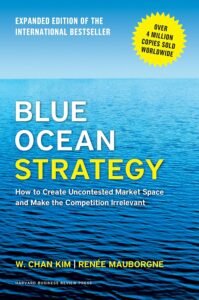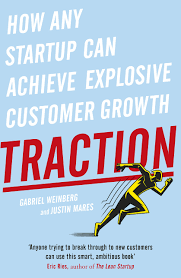Overview – Why The Magic of Thinking Big Matters
If you’ve ever wondered why some people achieve extraordinary success while others remain stuck, David J. Schwartz’s The Magic of Thinking Big holds the answer. First published in 1959, this classic book continues to transform lives worldwide.
Schwartz’s central message is simple yet powerful: “Success is determined not by the size of your brain, but by the size of your thinking.”
This book isn’t just for entrepreneurs or business leaders. It’s for:
-
Students who want to unlock their potential.
-
Professionals looking to climb the career ladder.
-
Business owners striving for growth.
-
Everyday people who want to live long, happy, and meaningful lives.
Thinking small limits your results. Thinking big expands your opportunities. Let’s dive into the 13 transformative lessons from the book.
Key Concepts – The 13 Best Lessons from The Magic of Thinking Big
Lesson 1: Believe You Can Succeed and You Will
Everything starts with belief. When you believe in your ability to succeed, your brain finds ways to make it happen. Disbelief, on the other hand, breeds failure.
💡 Real-Life Example: Oprah Winfrey grew up in poverty and faced rejection early in her career. But she always believed she was destined for greatness. That belief pushed her to become one of the most successful media moguls in history.
👉 Action Tip: Start your day with the affirmation: “I can do it. I have the power to succeed.”
Lesson 2: Cure Yourself of Excusitis
Excuses are the enemy of success. People say: “I’m not smart enough,” “I’m unlucky,” or “I don’t have resources.” Schwartz calls this disease excusitis. Successful people don’t let excuses define them.
💡 Real-Life Example: Colonel Sanders, founder of KFC, was rejected over 1,000 times before someone agreed to franchise his fried chicken recipe—at the age of 65! No excuses, only persistence.
👉 Action Tip: Replace every excuse with a solution. Instead of “I don’t have time,” say “How can I make time?”
Lesson 3: Don’t Sell Yourself Short
Most people underestimate themselves. But success requires healthy self-esteem. Think highly of yourself and your potential.
💡 Real-Life Example: J.K. Rowling was a struggling single mother when she wrote the first Harry Potter book. Despite many rejections, she believed in her story and eventually built a billion-dollar brand.
👉 Action Tip: Write down your strengths. Celebrate your small wins—they build your confidence.
Lesson 4: Use Big, Positive Words
Words shape your reality. Negative words create negative thoughts. Positive, cheerful words fuel confidence and energy.
👉 Say “I feel challenged and excited” instead of “I have a problem.”
💡 Real-Life Example: Leaders like Richard Branson are known for using positive, energizing language that inspires their teams.
👉 Action Tip: Next time you talk about work, replace the word “problem” with “opportunity.”
Lesson 5: Look Important – It Helps You Think Important
Appearance influences self-perception and how others see you. Dress and carry yourself as the person you want to become.
💡 Real-Life Example: Steve Jobs famously wore his black turtleneck and jeans—not expensive, but consistent and confident. His look became part of his leadership presence.
👉 Action Tip: Start paying attention to posture, grooming, and attire. Stand tall and feel important.
Lesson 6: Build Your Self-Commercial
Sell yourself to yourself. Self-talk matters. Praise yourself, encourage yourself, and reinforce your worth.
👉 Action Tip: Create a “self-commercial” – a short positive speech about yourself. Repeat it daily.
Lesson 7: Ask Yourself – Is This How a Successful Person Thinks?
Whenever you face decisions, compare your thoughts with those of someone you admire.
💡 Real-Life Example: Warren Buffett often advises: “Think long-term.” Successful people make decisions based on growth, not short-term comfort.
👉 Action Tip: Before making a choice, ask: “Would a successful leader think this way?”
Lesson 8: Make Your Environment Work for You
Your environment shapes your mindset. The people you spend time with, the content you consume, and the habits you adopt directly influence your future.
💡 Quote: Jim Rohn once said, “You are the average of the five people you spend the most time with.”
👉 Action Tip: Surround yourself with positive, growth-minded people. Read inspiring books and limit toxic influences.
Lesson 9: Practice Conversation Generosity
Successful people are humble and genuinely interested in others. They listen more, talk less, and build goodwill.
👉 Action Tip: In your next conversation, ask more questions about the other person. Show real curiosity.
Lesson 10: Be an Activationist – A Doer, Not a Dreamer
Ideas are worthless without action. Schwartz calls for activationists—people who get things done.
💡 Real-Life Example: Elon Musk didn’t just dream of electric cars and space rockets. He acted boldly, turning impossible ideas into Tesla and SpaceX.
👉 Action Tip: Pick one small goal today and act on it immediately. Momentum builds success.
Lesson 11: Blend Persistence with Experimentation
Persistence is crucial, but repeating the same approach endlessly won’t work. Pair persistence with experimentation.
💡 Example: Thomas Edison failed thousands of times before inventing the light bulb. He persisted but also experimented with new methods.
👉 Action Tip: If one method fails, try a new one. Persistence + creativity = success.
Lesson 12: Use Goals to Help You Grow
Goals give life direction. Without them, people drift. Set meaningful, measurable goals that stretch your potential.
💡 Real-Life Example: Michael Phelps, Olympic swimmer, set precise goals for every training session. That discipline made him the most decorated Olympian of all time.
👉 Action Tip: Write down three specific goals for the next year. Break them into monthly and weekly milestones.
Lesson 13: Think Like a Leader
Leaders focus on progress, solutions, and growth. They inspire others with vision and action.
💡 Real-Life Example: Mahatma Gandhi had no official power, yet his leadership mindset moved millions and changed the world.
👉 Action Tip: Influence others positively. Be the example, not the critic.
10 Key Takeaways from The Magic of Thinking Big
-
Believe in yourself—belief creates success.
-
Stop making excuses—success is action-based.
-
Value yourself—don’t sell yourself short.
-
Use positive, powerful words.
-
Appearance influences self-confidence.
-
Self-talk is your secret power—build yourself daily.
-
Think like successful people.
-
Choose your environment wisely.
-
Be generous in conversations.
-
Take action—doers change the world.
Action Plan – How You Can Apply These Lessons
-
Start each day with a success affirmation.
-
Eliminate one excuse from your vocabulary this week.
-
Build your self-commercial and practice it.
-
Upgrade your environment: join a growth-focused group.
-
Set a clear, measurable goal and take one action daily.
Lessons Learned
The biggest lesson from David Schwartz’s The Magic of Thinking Big is this: Your mindset determines your success. Before you achieve big things, you must think big. Success begins in your thoughts and grows with consistent action.
Step-by-Step Guide to Implementation
-
Read one chapter per week and reflect on it.
-
Write a journal applying each principle to your life.
-
Surround yourself with achievers – find mentors.
-
Practice positive self-talk daily.
-
Set ambitious goals and take immediate steps toward them.
Final Words – Call to Action
The magic truly begins when you apply these principles, not just read them. Start today—believe in yourself, think bigger, and take action toward your dreams.
💡 Want personalized financial planning and self-growth strategies? Visit www.mycashflowhub.com or call 885-511869 for a free consultation.
Disclaimer
This blog is a summary and commentary on The Magic of Thinking Big by David Schwartz for educational purposes. The ideas shared are interpretations and applications for personal development and self-growth




